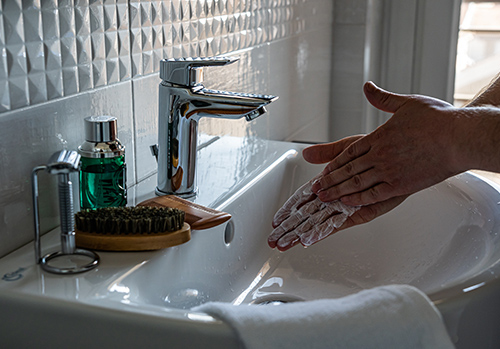
Photo by Castorly Stock on Pexels.
Have you ever read the ingredients on the back of your shampoo bottle? Have you read the back of your liquid hand-soap bottle? If you have done so, you probably have wondered what some of these words mean. Are those ingredients safe for you to use? Let us examine one ingredient: sodium lauryl sulfate.
What is sodium lauryl sulfate?
Sodium lauryl sulfate (SLS) is a powerful synthetic chemical used as a surfactant and emulsifier. What is a surfactant? Surfactants acquired their name because they principally impact the surfaces they touch. When it emulsifies, SLS stabilizes and thickens products for smoother use. SLS is found in many products in your home, such as shampoos, liquid hand soap, toothpaste, and home-cleaning products. The chemical is also present in some food. As a food additive, SLS can make marshmallows fluffier or dried eggs lighter in weight. It is interesting to note that the Europe Union banned SLS as a food additive. Manufacturers obtain SLS from inexpensive and plentiful petroleum. The fatty acids are removed, transformed into fatty alcohols, then sulfonated to convert to a crystalline salt.
Many soaps contain a combination of oil and water; you may already know oil and water do not mix. How does soap bring these two together? The answer is sodium lauryl sulfate. “Soap’s cleaning power comes from the bonded oil and water molecules rubbing against dirt and grease.” SLS is the ingredient that causes foaming to occur when you lather the soap or shampoo or brush your teeth with toothpaste.
Is sodium lauryl sulfate harmful?
Our skin naturally protects us from allowing harmful chemicals in our bodies. Experts determine a chemical is detrimental to our skin when scientific studies discover the chemical both irritates and penetrates the skin. Researchers have found SLS to do both. One study found that 668 (41.8%) of 1600 participants were irritated by SLS products. That is a significant number of people negatively affected by SLS.
How does sodium lauryl sulfate compare to other skincare products? What does it say about a substance when researchers use SLS as a benchmark to determine how much irritation a skincare product causes to human skin? Based on scientific research, you should not trust SLS as a safe skin application.
In 2004, scientists applied one percent SLS solution to one arm from each of 20 healthy participants for 24 hours. The researchers documented water loss in the skin, dehydration of the skin, and skin redness that lasted for 7 to 9 days. Earlier-conducted research found SLS mixed with warm water caused more irritation. Furthermore, a 2023 study noted that SLS toxicity is significant, especially in aquatic organisms.
What are alternatives to products with SLS?
You can get your hands, hair, body, or house just as clean without using products with SLS. Coconut oil is a natural surfactant that cleanses and hydrates hair and skin. Castile Soap is another option available. The product consists of vegetable oils: olive oil and coconut oil; people have used their products for shampoo, hand soap, and body wash. Many dishwasher soaps can leave your hands dry. I think we already know the culprit ingredient. Are you tired of dry and irritated hands? You will want to try dishwashing liquid like Eco Me Dish Soap. This plant-based dish soap contains no sulfates, dyes, colorants, or harsh preservatives.
If you find this article informative, please read another one of our articles discussing the safety of air freshers.
Life Insurance Questions?
We hope that this information on sodium lauryl sulfate is useful to you.
If you’d like to learn how we can help you plan your retirement, call Empower Brokerage at (888) 539-1633 to speak to one of our Life and Annuity experts or leave a comment down below.
Get affordable life insurance quotes by clicking here.
See our other websites:

